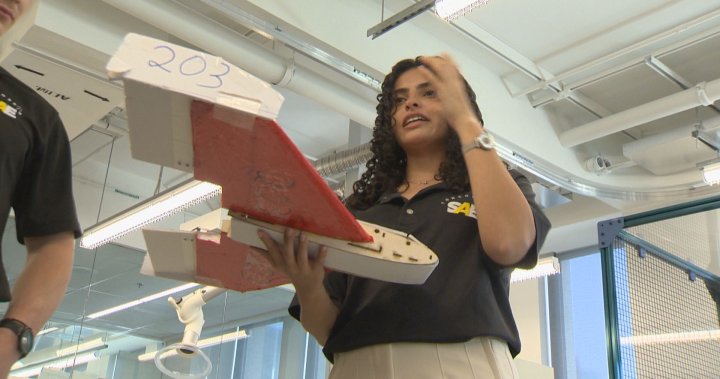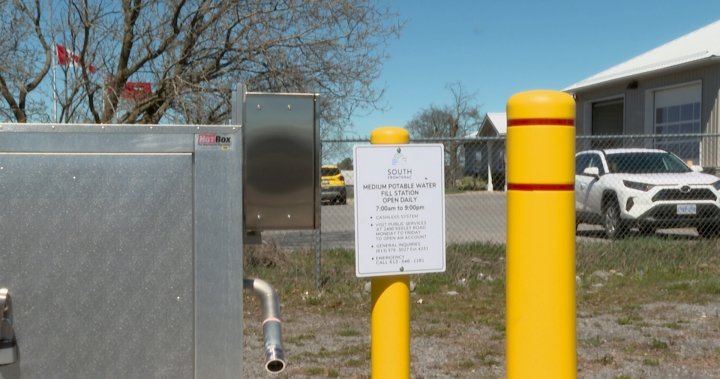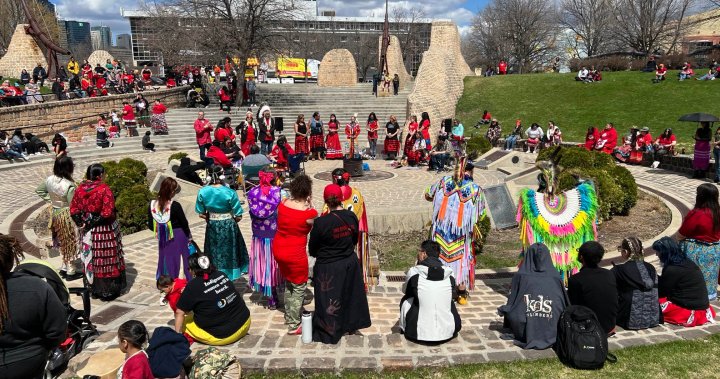Imagine fighting a raging bush fire and needing resupplies urgently.
That’s a problem emergency services experts and engineers are trying to solve, especially with the number of forest fires increasing across the globe, including in Canada.
“It’s a lot easier to send in aircraft than it is to send in ground vehicles to support those people who are on the ground fighting those forest fires,” explains David Sander, community programs manager for the Society of Automotive Engineers (SAE).
But flying into a fire zone is also dangerous for pilots, he points out. The challenge, therefore, is to get supplies and other support in by air without a pilot. That problem was put to university students from around the world in the annual SAE Aero Design competition for the 2023-24 school year.
Concordia University in Montreal sent a team.
“The engineering idea behind the project is forest fire suppression, so aerial solutions for fire suppression,” says aerospace engineering student Joey Vezina, the team captain.
Breaking news from Canada and around the world
sent to your email, as it happens.
Breaking news from Canada and around the world
sent to your email, as it happens.
The assignment: build two planes to simulate safely bringing supplies to firefighting crews.
“So the larger aircraft with a camera on board would be able to detect fires and then the smaller aircraft — the powered autonomous delivery aircraft — would deliver supplies to the ground crew,” Vezina tells Global News.
In a real-life scenario, the larger, piloted plane would drop a fixed-winged drone with cargo into the fire area, and do it repeatedly. The students had to build a model plane and a model drone, then demonstrate how it would all work.
That was the advanced competition, which featured 17 teams.
“We got second overall and we got first place in the presentation,” says Magy Gerges, who’s studying computer engineering at Concordia and was responsible for the computer systems on the models.
The university also had another team for the regular competition — a bit simpler but still challenging, according to Jeremy Lampron, another aerospace engineering student.
“The project basically is to design and build an aircraft following the requirements and to optimize the requirements to score as many points as possible.”
Their model plane had to take off within 100 feet and carry the heaviest load possible. His team earned third place out of 34 teams.
Both teams went to Lakeland, Fla., earlier this month for the competition after spending months designing and building the planes. The students say the learning experience was immeasurable.
“It was a lot of (learning) how to work with different people,” Gerges says. “Different people required different types of management.”
According to Sander, the decades-long competition helps industry find solutions and allows students to not just network, but also start thinking about some of the numerous problems they’ll face as engineers.
© 2024 Global News, a division of Corus Entertainment Inc.




